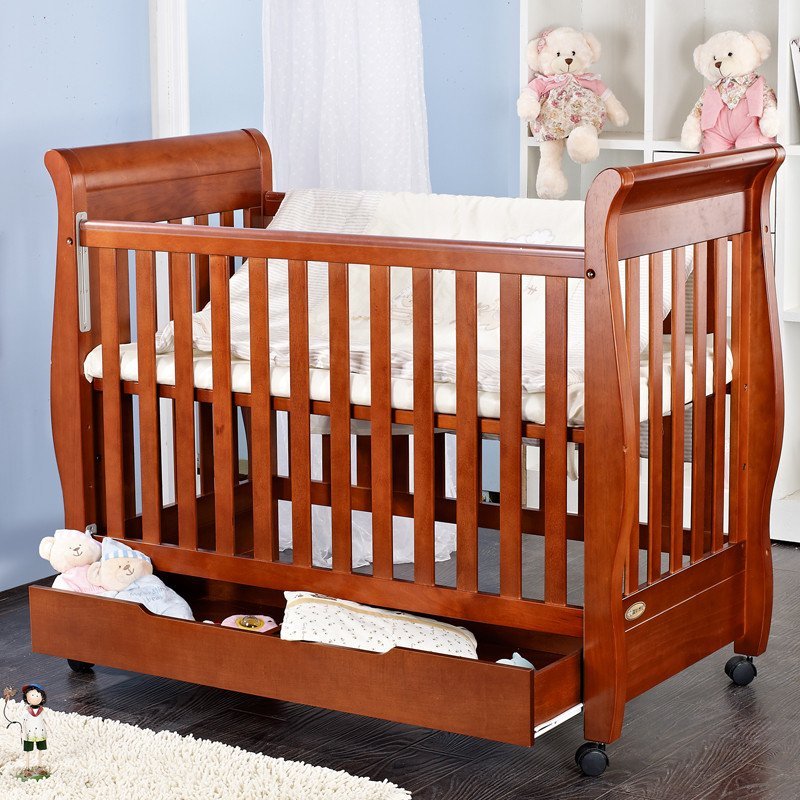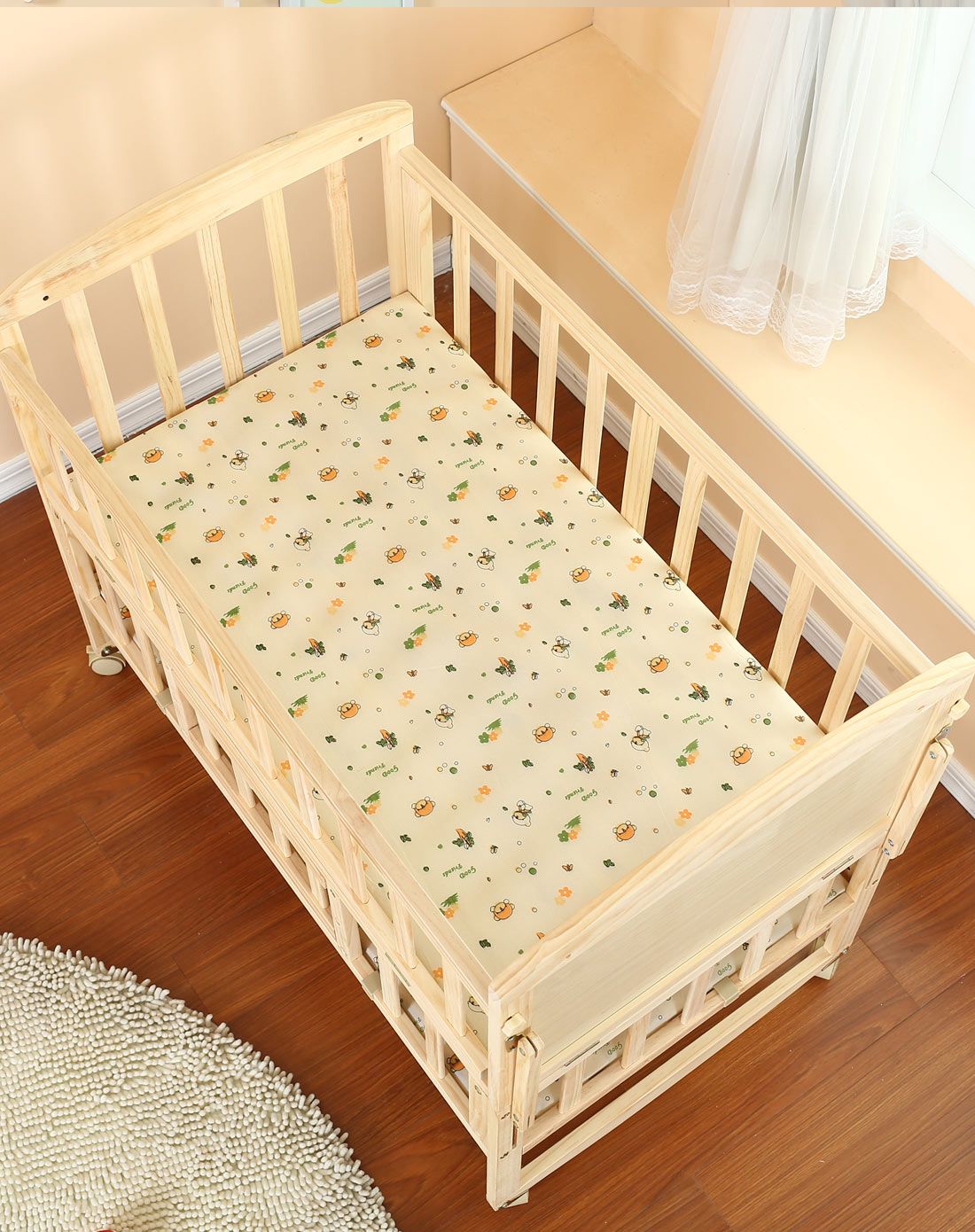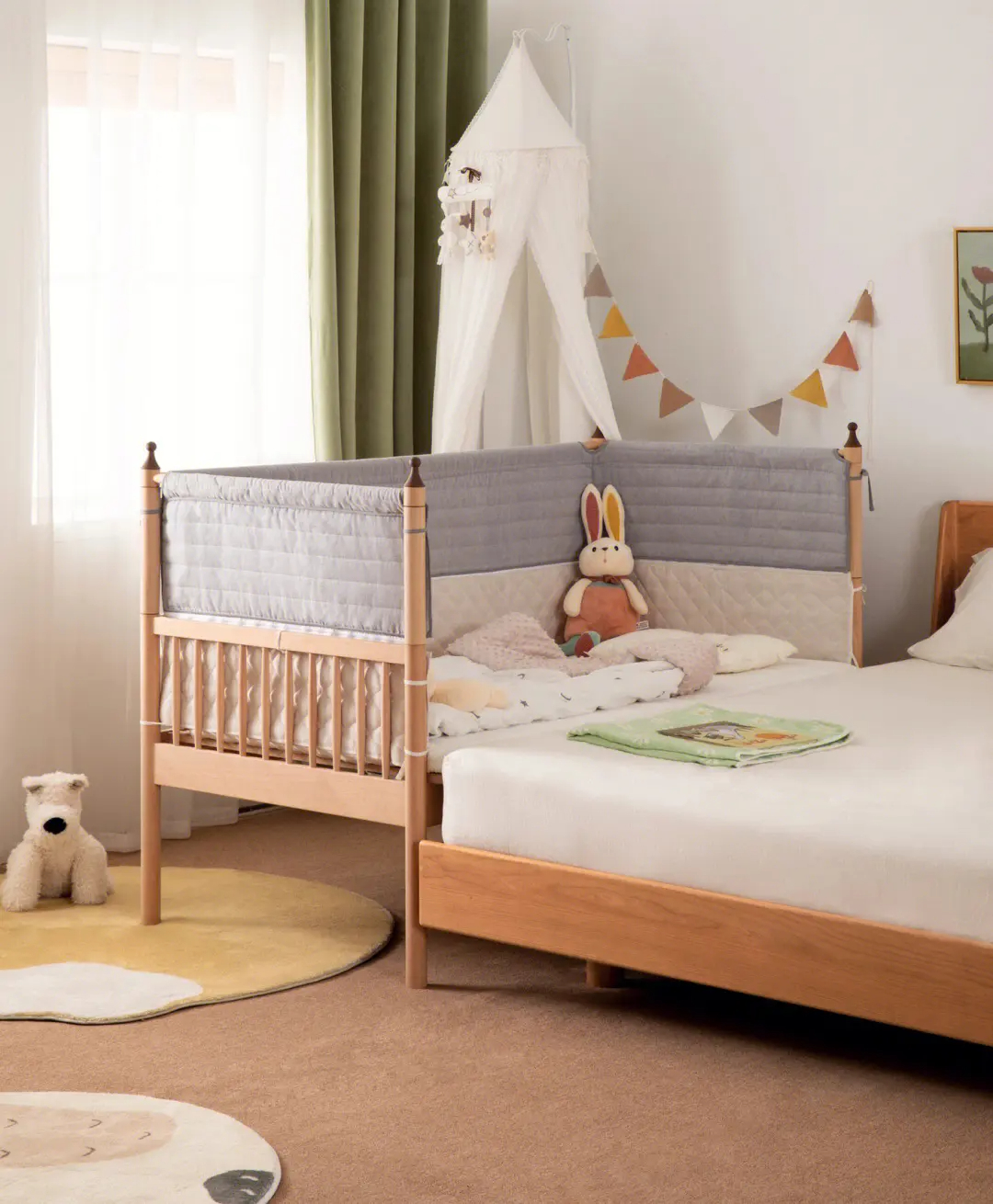Introduction: Understanding the Importance of Crib Size
Choosing the right cribs for your little one is essential for creating a safe and comfortable sleep environment. One crucial factor to consider when selecting a crib is its size, particularly its length. In this article, we’ll explore the importance of crib size and provide guidance on how to determine the appropriate length for your child’s crib.

The Significance of Crib Size: Safety and Comfort
The size of a crib plays a significant role in your child’s safety and comfort during sleep. A crib that is too small may restrict your child’s movement and pose a risk of injury, while a crib that is too large may create gaps where your child’s limbs or head could become trapped. Additionally, a properly sized crib ensures that your child has enough room to stretch, roll, and move comfortably while sleeping, promoting healthy sleep habits and development.
Standard Crib Dimensions: Understanding the Basics
Standard cribs typically have interior dimensions of approximately 28 inches wide by 52 inches long, with a mattress size of 27 1/4 inches by 51 5/8 inches. These dimensions are designed to accommodate most standard crib mattresses and provide a safe and comfortable sleeping space for infants and toddlers. However, it’s essential to note that crib sizes may vary slightly depending on the manufacturer and model, so it’s crucial to measure the crib carefully before making a purchase.

Factors to Consider When Choosing Cribs Length
When determining the appropriate length for your child’s crib, several factors should be taken into account:
- Age and Size of Your Child: Consider your child’s age and size when selecting a crib. Infants and younger babies may require a smaller crib to provide a cozy and secure sleep environment, while older babies and toddlers may benefit from a larger crib with more room to move and grow.
- Room Size and Layout: Take into consideration the size and layout of your child’s nursery or bedroom when choosing a crib. Ensure that the crib fits comfortably within the space without obstructing walkways or other furniture. If space is limited, opt for a compact crib or a mini crib that still provides ample sleeping space for your child.
- Future Use and Convertibility: Some cribs design to grow with your child and can be converted into toddler beds, daybeds, or full-size beds as your child grows. When selecting a crib, consider whether you plan to use it for multiple children or if you prefer a crib that can converte into a different bed configuration in the future.

Measuring Your Child’s Crib: A Step-by-Step Guide
To ensure that your child’s crib is the right size, follow these steps to measure it accurately:
- Measure the Interior Dimensions: Using a tape measure, measure the interior dimensions of the crib, including the width, length, and height. Record these measurements to use as a reference when selecting a crib mattress.
- Check for Compliance with Safety Standards: Verify that the crib meets safety standards set by organizations such as the Consumer Product Safety Commission (CPSC) and the American Society for Testing and Materials (ASTM). Look for certifications or labels indicating compliance with these standards to ensure that the crib is safe for your child.
- Test for Stability and Durability: Shake the crib gently to test for stability and durability. Ensure that all hardware is secure and that there are no loose or wobbly parts that could pose a safety hazard to your child.

Factors Affecting Cribs Length: Considering Growth and Safety
Beyond the immediate concerns of room size and layout, several additional factors should influence your decision regarding crib length, particularly regarding your child’s growth and safety.
1. Growth Trajectory: Babies grow at an astonishing rate during their first few years of life. When choosing a crib length, it’s crucial to consider your child’s growth trajectory and anticipate how long they will comfortably fit within the crib. While a standard-sized crib may accommodate most infants and toddlers, some children may outgrow their cribs more quickly than others. Opting for a crib with adjustable mattress heights or convertible features can help prolong its usability as your child grows.
2. Safety Standards: Safety is paramount when it comes to selecting a crib for your child. Ensure that the crib you choose complies with current safety standards established by organizations such as the Consumer Product Safety Commission (CPSC) and the American Society for Testing and Materials (ASTM). This includes regulations regarding crib dimensions, spacing between slats, and the absence of hazardous materials such as lead-based paint or toxic finishes. Choosing a crib that meets these safety standards will help protect your child from potential hazards and ensure their well-being while sleeping.
3. Toddler Transition: Many parents opt to transition their children from a crib to a toddler bed once they reach a certain age or developmental milestone. When selecting a crib length, consider whether you plan to make this transition in the future and choose a crib that can accommodate your child’s needs as they grow. Convertible cribs that can be transformed into toddler beds or daybeds offer a seamless transition from infancy to toddlerhood, providing long-term value and versatility.
Conclusion: Finding the Perfect Cribs for Your Child
In conclusion, selecting the right cribs size is essential for creating a safe and comfortable sleep environment for your little one. By considering factors such as your child’s age and size, room size and layout, and future use and convertibility, you can choose a crib that meets your child’s needs and preferences. Remember to measure the crib carefully and verify that it complies with safety standards before making a purchase. With the right crib, you can provide your child with a cozy and secure sleeping space where they can rest peacefully and grow healthily.
In conclusion, selecting the appropriate crib length for your child involves considering a variety of factors, including growth trajectory, safety standards, toddler transition plans, and sleep environment preferences. By taking these factors into account and prioritizing your child’s comfort, safety, and long-term needs, you can choose a crib length that provides an optimal sleep environment and promotes healthy growth and development. Whether you opt for a standard-sized crib or a convertible model with adjustable features, finding the right balance between safety, functionality, and comfort will ensure that your child enjoys restful sleep and peaceful nights for years to come.
